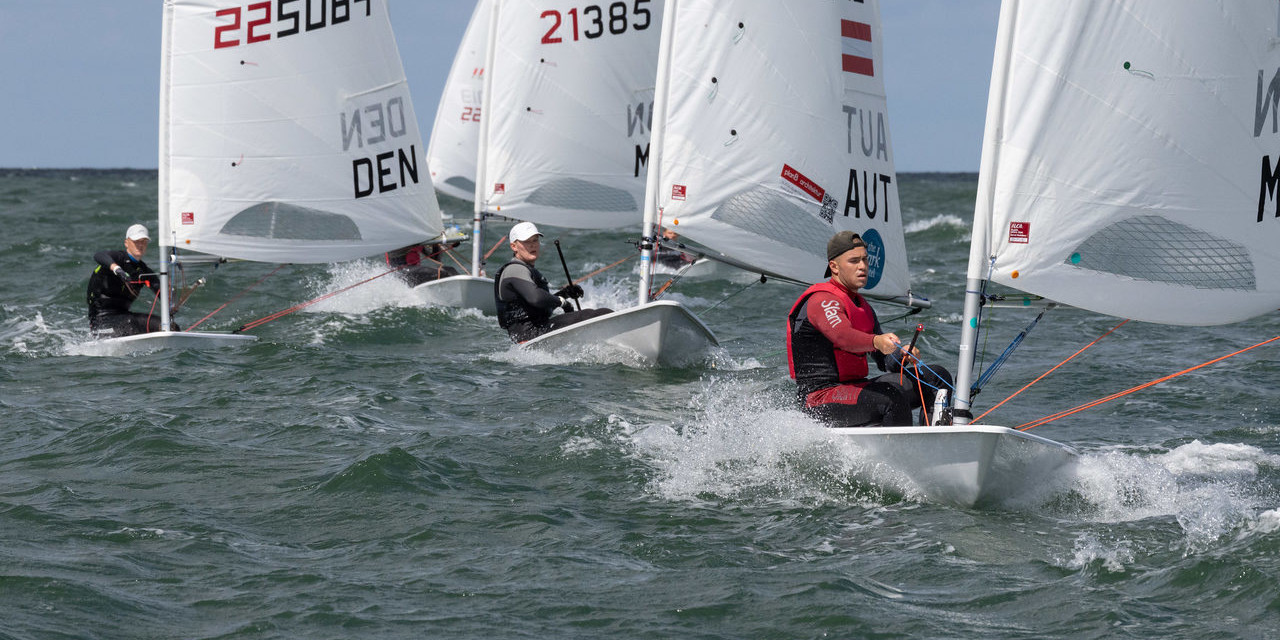Monaco, 22 September 2020
In the presence of HSH the Sovereign Prince Albert II, President of the YCM, five speakers presented the different opportunities of hydrogen solutions to provide yacht owners with an alternative to the use of diesel, for propulsion and / or to provide the energy necessary for hotel load, without emissions and noise.
Jérémie Lagarrigue began the conference with a few explanations on the current environmental situation, the level of greenhouse gas emissions and global warming, in order to understand the importance and the urgency of the energy transition. After explaining how a fuel cell works and unveiling its installation on board Energy Observer in collaboration with Toyota, he highlighted the advantages of hydrogen over diesel but also in comparison to “all electric” systems that use only batteries. He also explained how hydrogen is a vector which makes it possible to store and transport energy, then turned into electricity, and how hydrogen is part of a strategy of ENR combinations that depend on user profiles.
For the maritime sector, Jérémie Lagarrigue demonstrated the potential and the technological, environmental and economic validity of hydrogen solutions, taking among others the example of the first electro-hydrogen tender presented by HYNOVA, a unique 12-meter boat whose propulsion was designed by EODev, and whose prototype was exhibited on the YCM terrace.
Energy transition in the yachting sector therefore offers various options, including diesel-hydrogen-electric hybridizations. Ending up his presentation, Jérémie explained the issues related to the storage and delivery of hydrogen, insisting on the need to develop infrastructure and set up refuelling stations without being limited by administrative delays. It is to meet these short-term challenges that EODev created STSH2 (Station SHip H2), a floating hydrogen production and distribution platform.
Highlighting the maturity of these technologies, Jostein Bogen, Director of the hydrogen program at ABB, explained how hydrogen should ultimately be an essential link in the decarbonization of maritime freight, for medium to high power ranges which can also be apply to superyachts. He also insisted on the possible variants of its use, and on a gradual transition via a combination of hydrogen with other fuels such as bio-fuels or ammonia.
Cyril Dufaut-Senso, CEO of HY2GEN, a company specializing in the production of carbon-free fuels, continued by explaining the methods of manufacturing hydrogen, and the differences between grey hydrogen, produced from fossil fuels, and the “green” hydrogen produced from renewable energies – the source everyone wants to go for, but which today represents less than 5% of total hydrogen production. He also presented the SUNRHYSE green hydrogen production plant, using a solar panel farm in the Var to supply the entire PACA region up to Monaco, with zero emissions truck distribution, and a total capacity of 12 tonnes of green hydrogen produced daily by 2024.
Finally, Dirk de Jong from Oceanco and Simon Brealey from Lateral Engineering showed how hydrogen solutions are already possible on megayachts with the use of liquid hydrogen, cryogenized at -253 ° C. The comparison between the technical data of the Aqua project and a yacht of similar gauge and size like Lady Eugenia (109m) highlighted that the space allocated to the living space and fittings was reduced by about a third, and that the yacht could lose some knots at top or cruising speed.
For all of these experts, the primary issue remains the management of hydrogen storage. While cars can carry tanks where hydrogen is stored at 700-bar pressure, the maritime industry is only allowed a compression of 350 bar today, which is not enough to make it practical. While other storage solutions at ambient temperature and pressure already exist, such as LOHC (Liquid Organic Hydrogen Carrier) or LIHC (Liquid Inorganic Hydrogen Carrier), these technologies are not yet sufficiently mature or economically valid to be deployed on a large scale. This is the whole problem also encountered on large cargo ships or container ships such as those operated by CMA-CGM. Using practical projections, Erwan Jacquin explained how, today, he would need the energy provided by 150 wind turbines to generate and supply hydrogen to only one of his ships, stored in nearly 50% of the useful volume of the vessel with a compression at 350 bar. Impractical and economically irrelevant.
Nevertheless, all agree that some solutions are already viable, and that the remaining technical limitations for a wider deployment will be quickly resolved, from 3 to 10 years depending on the storage processes envisaged — which may be the time it takes to build a large yacht from the its early sketches to delivery. They also insist on the need for the distribution networks to be rapidly increased; and highlight the future economic profitability of such investments, in particular for marine use that has high energy consumption. In summary, as Jérémie Lagarrigue underlined it in the conclusion of his presentation, “it’s time to shift”. A formula that echoes the words of Bernard d’Alessandri earlier in the day during the presentation of the SEA Index, and the promise of a responsible future in the world of superyachting.
>> Watch again the replay of the Hydrogen Conference, click here
Dernières publications
15 July 2024
Celebration of youth
Celebration of youth Youth Sailing World Championships – Riva del Garda 15-19 July 2024 The…
14 July 2024
Monegasques out in force
Monegasques out in force French Open - Quiberon 11-14 July Laser sailors from Yacht Club de…
14 July 2024
Consistency on every start
Consistency on every start ILCA 7 - EurILCA Europa Cup GER – Warnemünde 6-14 July Consistency was…



